This was published 7 years ago
Birmingham, Alabama, US: America's infamous city transformed
By John Huxley
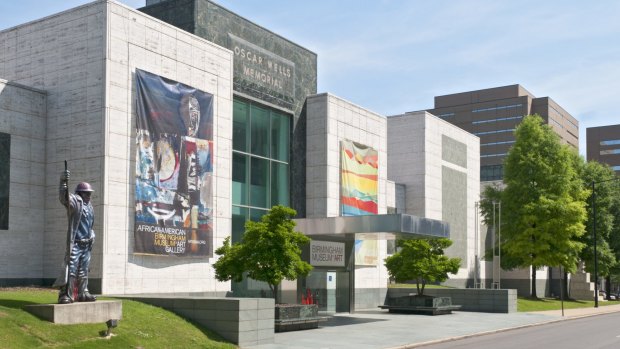
The Birmingham Museum of Art, with the steelworker statue at left.Credit: getty Images
For a city once known as swampy Mudville, built by cheap child and non-unionised, African-American labour, and named after the grimy British industrial metropolis, Birmingham, Alabama, has come a long, long way.
Forced to reinvent itself after it ran out of the coal, iron and limestone on which its early fortunes were founded, the civic fathers and mothers have created a dynamic, truly 21st century city.
Today, there's a buzz, a vibe, a can-do feeling about the place. As guide Verna Gates explains, for all its small-town charm Birmingham is now a sophisticated, international community drawn from all parts of the world.
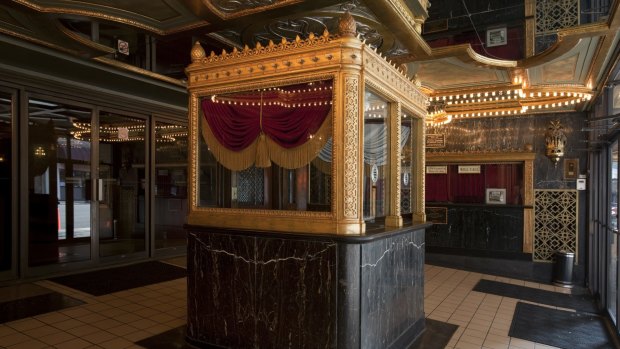
A ticket box inside the grand Alabama Theatre. Credit: Getty Images
There's a Jazz Hall of Fame, celebrating musical greats such as Nat King Cole, Duke Ellington and Clarence "Pinetop" Smith, and a Sports Hall of Fame, honouring local heroes, such as sprinter Jesse Owens, baseballer Willie Mays, boxer Joe Louis and others.
There's a choice of museums, devoted to everything from Health Science and the History of Flight, from the Heart of Dixie Railroad to vintage motor cars and motor bikes, some dating back to 1902.
There are botanical gardens, "the glory of nature in the heart of the city"; an American, colonial-style village peopled by interpreters in period costumes; and, a zoo, featuring bull elephants, sea lions and red river hogs.
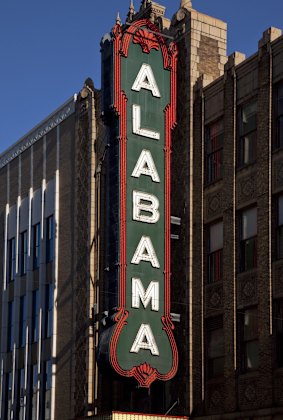
The Alabama Theatre.Credit: Getty Images
There are the arts. The Alabama Symphony Orchestra. Open-air pop concerts. The old, 1920s Alabama Theatre, where "silent" movies can be watched to the accompaniment of a Mighty Wurlitzer organ. The Art Gallery itself, which among other things, holds the biggest collection of Wedgwood pottery outside England.
And that's not all. Birmingham also offers great golf courses, a water park, a wine trail and fine dining.
Each Saturday, the Pepper Place Market offers fresh fruit and vegetables, cooking demonstrations, home-baked breads and cookies and a range of local crafts.
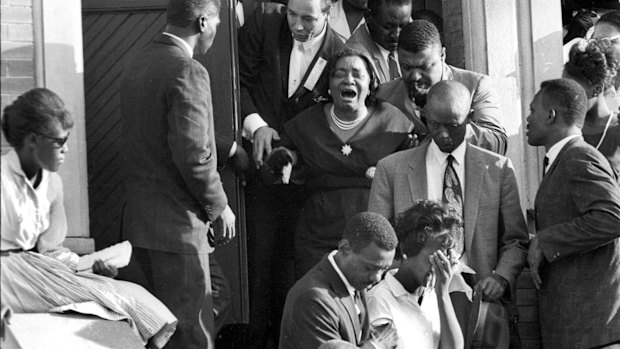
Scenes at the funeral for the young girls killed in the notorious race bombing. Credit: Chicago History Museum/Getty Images
Go-to restaurants include the Bottega, where the American Deep South meets the Italian countryside in an imaginative mix and, in the evenings, the Hot and Hot Fish Club.
Despite its crazy name, the dressy restaurant offers a blend of French, Southern and California-styles of cooking, devised and assembled in an open-to-view kitchen.
With so much to see, do, taste and enjoy, it is little wonder that the city of 220,000 is now promoted, on giant murals with the familiar, down-home friendly slogan, "It's Nice to Be in Birmingham".
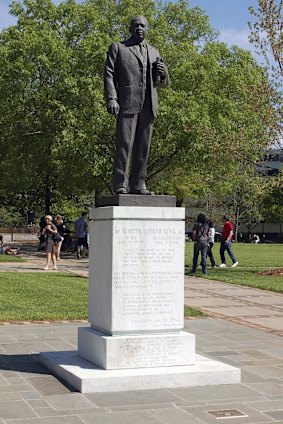
The statue of Dr Martin Luther King at Kelly Ingram Park.Credit: Getty Images
So it is, but it was not always thus. The history of the city also has a darker side which cannot and should not be ignored by visitors.
The best place to start, perhaps, is only a short walk from downtown, at the Sixteenth Street Baptist Church, the first black church organised in Birmingham in 1873.
Because of its central location the church served as headquarters for the civil rights mass meetings and rallies in the early 1960s, when the city was regarded by black citizens as the most racist in America.
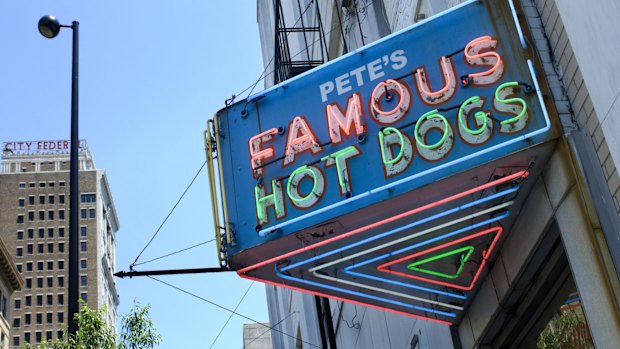
The iconic Pete's Famous Hot Dogs sign.Credit: Getty Images
"During this time of trial, turmoil and confrontation," a short history explains, "the church provided strength and safety for black men, women and children dedicated to breaking the bonds of segregation in Birmingham."
In May, 1963, marches and demonstrations, led in part by children, were brutally repressed by the police, who made several thousand arrests, including that of civil rights leader, the Reverend Dr Martin Luther King.
It was from behind the bars of the local prison that King wrote his historic "Letter from Birmingham Jail", defending the civil right strategy of non-violent resistance to racism.

The Alabama Sports Hall of Fame. Credit: Getty Images
Worse was to follow. Later that year, on the morning of September 15, the church was rocked when a bomb, set off by one or more members of the local, far-right racist Ku Klux Klan, exploded killing four girls aged between 11 and 14.
More than half a century later, tears still come to the eyes of church guide Barry McNealy, as he describes once again how children died downstairs in the church, while preparing for Sunday School.
In other parts of the city, now dubbed "Bombingham", a black youth was killed by police, and a second murdered by a mob of white men.
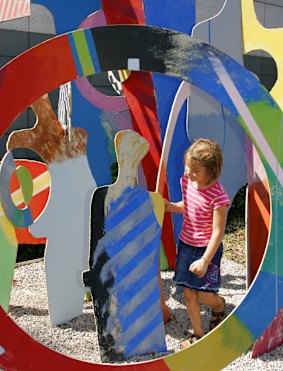
The children's sculpture garden.Credit: Getty Images
"It was a shocking, terrifying day in the history of Birmingham and a day that forced white leaders to further come to grips with the city's bitter racist reputation," wrote the 16th Street Church historian.
The story is taken up, just across the road from the church, in the old Kelly Ingram Park. This afternoon, it swelters in the afternoon sun, silent but for a few men arguing the merits of rival Alabama and Auburn football teams. But, as McNealy explains, the park statues tell a different story.
It is one of four little girls, who lost their lives to a racist bomb. Of water cannons that struck civil rights marchers with a force that felt "like a million needles", and sent them "flying like tumbleweed".
Of the reviled Public Safety Commissioner, Eugene "Bull" Connor, releasing fierce dogs that ripped the flesh of fleeing demonstrators.
"The next day the local newspaper had a page-one story about an injury to a dog whose tail was trapped in a police truck door," McNealy says. "The demonstration got one paragraph on the back page."
There are, too, statues to King and to his ally, rights campaigner and fellow churchman, the much-loved Reverend Fred Shuttlesworth, who was beaten by Klansmen and whose home was bombed.
The continuing story of how civil rights were won continues in the near-by Birmingham Civil Rights Institute, whose exhibits, artifacts and archives are a valuable resource for educators and researchers across the United States.
As Odessa Woolford, a former chairwoman of the museum's board said recently, "It's a story with a complicated ending. But one in which hope prevailed."
And one in which the increasing number of visitors to Birmingham, Alabama, can share.
The author is proud to have been born and raised in Birmingham, England.
TRIP NOTES
MORE INFORMATION
GETTING THERE
Non-stop flight by Qantas from Sydney to Dallas-Fort Worth and on to Nashville by code-share partner American Airlines. The author visited Birmingham on a 12-day itinerary arranged by Travel South USA.
STAYING THERE
The Deep South offers a wide range of hotels, motels and homestays, ranging in price from US $25 to US $500 a night. The author stayed at the Westin Birmingham Hotel.
John Huxley was a guest of Travel South USA and Qantas.
Sign up for the Traveller Deals newsletter
Get exclusive travel deals delivered straight to your inbox. Sign up now.